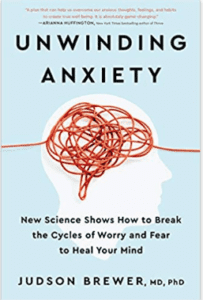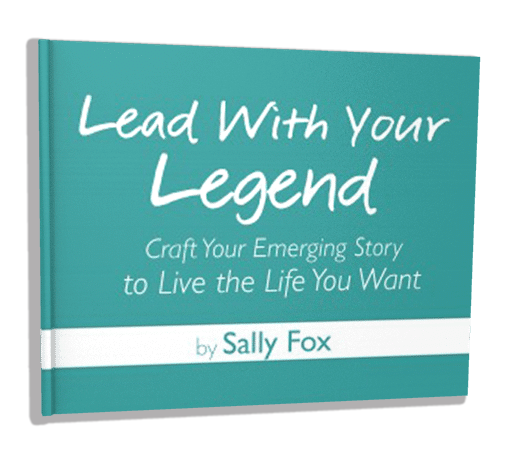
Hopefully, the pandemic is receding and so, too, is the spike in national (and global) anxiety it provoked. I suspect, though, that some form of anxiety will stay with us, albeit in a more chronic rather than acute form. It may be the price of admission for the opportunity called modern life.
Who knows what will trigger the next round of personal or societal anxiety.
Why wait for the next disaster when we can improve our anxiety-regulation skills today?
We can learn to manage our anxiety before the next time it sends us into reactiveness, brain fog, or pseudo-comforting addictive behaviors.
Got anxiety?
If you’re living in the United States, chances are good that you do.
Higher-income countries, in general, have more anxiety than lower-income countries. And anxiety in this country was rising before the pandemic arrived.
Clinically diagnosed anxiety, though, is just the tip of the iceberg. Stats on those cases don’t catch the anxiety many of us experience when we think “What-will-happen-this-fall?” “Do I have to socialize?” or “No-not-another-shooter.”
We live in a world where anxiety is catching. It’s at least as contagious as Covid. And as far as I know, there’s no vaccine.
“You’re anxious”
My interest in the subject is not academic.
A doctor, a few years back, told me that I had anxiety. Apparently, she thought normal, aging mortals weren’t supposed to rise five times a night to pee (verdict still out on that…).
- My first reaction was: “Nah, not me.”
- My second reaction was: “How can anyone not be anxious given what’s going on in this country?”
- My third was, “I think this conversation is making me more anxious.”
My doc was probably right. While I don’t have clinical anxiety, While I don’t have clinical anxiety, her diagnosis propelled me to investigate how I might keep my garden-grade variety in check.
First steps
That’s why I wanted to read Judson Brewer’s new book, Unwinding Anxiety: New Science Shows How to Break the Cycles of Worry and Fear to Heal Your Mind. Brewer, a physician, has faced his own anxiety while treating that of many others. In this scientific, yet personal, work, he shows us how our desire to avoid anxious feelings can bloom into bad habits if not larger addictions.
Anxiety makes addicts of us all
The word addiction often brings to mind big ones such as alcohol, gambling, eating, or drugs.
Yet addiction regularly shows up in smaller ways, in the small, self-defeating cycles we create when we’re triggered by worry.
Brewer writes, “Hate to tell you this but you’re addicted to something.”
He maps the cycle of addiction. We are triggered by a worry; we act in response; we reap a response that often makes us more worried. Spin and repeat.
For example:
- Trigger: We’re worried about taxes we haven’t done
- Behavior: We put off doing them.
- Result/reward: We end up worrying about them more. (Repeat cycle.)
Or,
- Trigger: We worry about a difficult conversation we need to have.
- Behavior: We reach out for our favorite comfort, such as ice cream, extreme bungee jumping, Netflix, Facebook, etc., instead of having the conversation.
- Result/reward: Our “solution” makes us feel worse and we still haven’t talked. (Repeat cycle.)
Advertisers know how to exploit our anxiety-induced addictions.
Animal trainers use intermittent positive reinforcement as a powerful way to train dogs. After Rover understands the game he is supposed to play, the trainer stops rewarding him all the time but makes sure Rover gets treats often enough to keep wanting to play.
Social media is treating us like dogs.
The savants behind social media algorithms use intermittent reinforcement. They give us an occasional biscuit in the form of interesting news bites, a greeting from a friend, or a “like.” Thus reinforced, we’re willing to tolerate their torrent of ads and keep returning to their site.
I turn to Facebook to relax. I receive a biscuit of connection. But in the end, I don’t relax. Generally, I fall into a stupor and then wonder where I’ve been.
When it comes to food, manufacturers have our number. They engineer the foods we turn to for relief, filling our “comfort foods” with the addiction-forming trio of sugar, fat, and salt. We reach for a little comfort and end up hooked.
As the Frito Lays potato chip ads used to brag: “Bet you can’t eat just one.”
When we finally finish our bag of chips, we still have our anxiety, (maybe even more) but now we feel yucky, guilty, and definitely heavier.

Many of our go-to’s to relieve anxiety don’t work. Neither do some common “solutions.”
Bound to fail “solutions”
Brewer lists three approaches to unwinding anxiety that don’t work.
- Willpower. Even if we’re good at powering ourselves into new behavior, we’re likely to lose resolve when we’re stressed. And failing to meet our resolve becomes another reason to beat ourselves up (i.e. more anxiety).
- Substitutions. Reaching for a carrot might be better than a potato chip. But only after we recognize the nature of our habit loop.
- Priming the environment. Taking out all the bad foods from our cupboards will decrease temptation. Until we learn we can order home delivery.
What works
The big winner, in his book, is mindfulness, nonjudgmental attention focused on the present moment. Usually, mindfulness involves calm, centered breathing and detached observation.
Brewer suggests three levels of intervention:
- Map our habits and cycles. Notice what triggers us and how we respond. Observe non-judgmentally without trying to change.
- Pay attention to the real results we experience: the thoughts, emotions, and bodily sensations generated by that bag of chips, along with the consequences.
- Substitute a BBO, a Bigger, Better Offer that allows us to break the cycle and reward ourselves with something that is good for us. Like a walk, or maybe that carrot.
The key is to allow ourselves to become curious, thriving on investigation rather than judgment and blame.
Picking BBOs
I’ve shared some of my strategies for calming my nervous system before–here are some favorites:
- Give my head a vibrational flush through humming, chanting, or sounding.
- Paint or draw as long as it’s just for fun.
- Invite two dogs to lie on top of me. Truthfully, they don’t need to be invited. They take savasana, the yogic rest pose, as their call-to-action. Once down on their level, I will be covered with licks as well as 110 pounds of flesh and fur.
What’s on your list?
Resilience in the time ahead
I hope that post-pandemic our collective level of anxiety will decrease.
Maybe we’ll find relief in a newly vaccinated world. But let’s not wait for the next spike in anxiety to find out.
Maybe a little worry can motivate us. (And for some of us, anxiety is chronic, anyway.)
But in the end, running on anxiety doesn’t help us change the world.
Brewer offers us an approach to try.
When we can manage anxiety mindfully, it won’t get to manage us.













3 Responses
Thanks Sally! Needed a reminder of Judsons work. Always happy to hear what your thinking so thanks for the Thursday uplift! Xoxo
when I’m feeling anxious I have a talk with my anxious self to find out what I can do to help. I also make a pot of herbal tea for anxiety to calm my nervous system. If those two actions don’t help I ask someone to help me sort out what’s happening.
If I did not have Lucy, Whitefoot, and Puppy Longstocking, I would not have survived this past year. Snuggling with my dogs is the perfect refuge. They have an understanding of the “Be Here Now” that I am still working on.